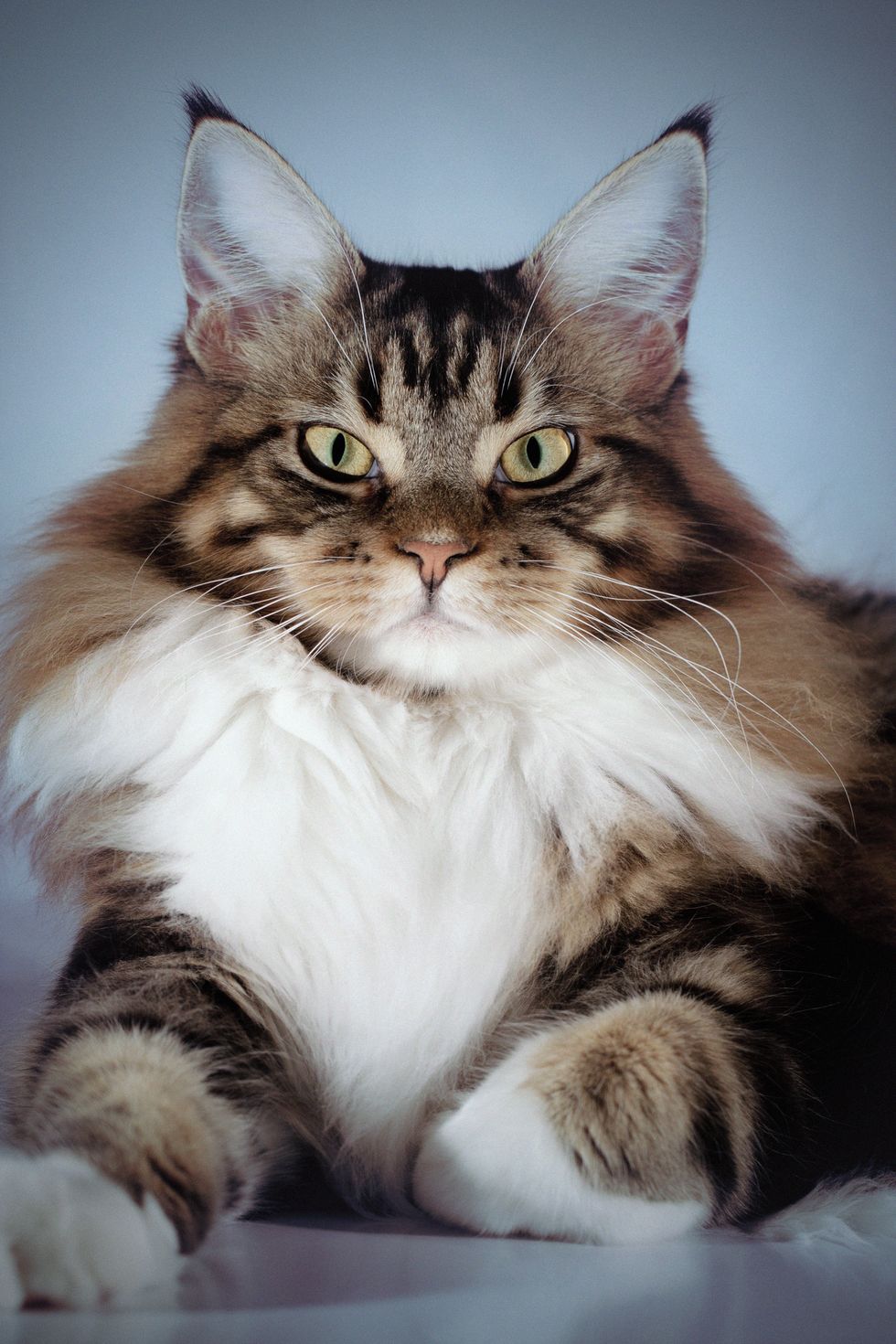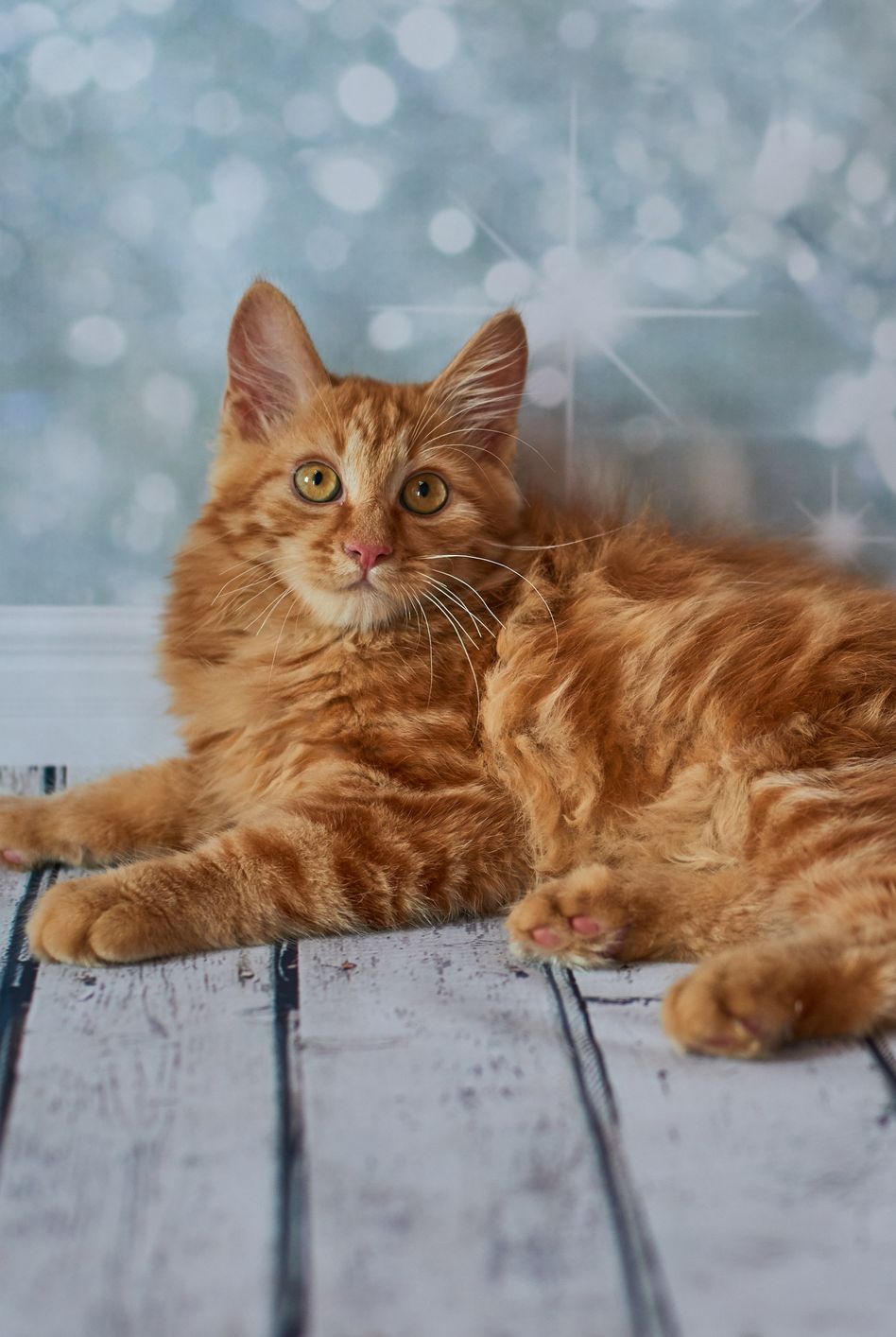
Many large cat breeds are cuddly companions for every member of the family. Depending on your lifestyle and preferences, you could want a cat to sit back and relax with, or one that can keep up with you on any adventure. Before we get to the 10 largest cat breeds, we had a few questions for Sarah Hodgson, a dog and cat trainer and the pet behavior specialist behind SarahSaysPets.com.
How will I know when my cat is fully-grown?
Wait until his or her first birthday. Hodgson says your cat will reach its full size after nine to 12 months.
Do bigger cats also have larger paws?
Not necessarily. According to Hodgson, the size of a kitten’s paws do not determine how big they’ll be later in life. However, long-haired cats might appear to have bigger paws because of all the fur on them.
What about “hybrid cats?”
Hybrid cats are the result of the breeding of non-domestic cats to domestic cats. We have two on this list, Savannahs and Chausies. While they are typically energetic and playful, there is some controversy surrounding them. In 2017, the American Association of Feline Practitioners reiterated their opposition to owning hybrid cats, “due to concerns for public safety and animal welfare issues.”
Keeping all of this in mind, let’s learn a little more about these felines:
Contents
Maine Coon
Weight: Up to 35 pounds
Nicknamed “the dogs of the cat world,” they’re both family friendly and extremely intelligent and interactive, says Hodgson. But while they’re fun for the whole family, there are some health concerns. These include a higher risk for polycystic kidney disease, hip dysplasia, and hypertrophic cardiomyopathy.

Savannah
Weight: Up to 30 pounds
Perhaps the most photogenic cat on the list, the Savannah almost looks like a cross between a leopard and a tiger. Hodgson says that’s one of their pros, along with being intelligent and energetic. Because they’re a hybrid breed, Hodgson says they could still exhibit aggressive and wild tendencies.

Siberian
Weight: Up to 28 pounds
“Siberians are very playful, they don’t require much care, they’re good with kids and other pets, affectionate, and love the outdoors,” says Hodgson. “They’re very healthy too.” While there aren’t many cons, know that you should invest in a heavy duty vacuum, because they often shed their long, fluffy hair.

Norwegian Forest Cat
Weight: Up to 22 pounds
Another family-friendly option is the Norwegian forest cat. This particular breed is known for being healthy, strong, and affectionate. Hodgson describes them as amiable, loyal, and outdoorsy. They are, however, prone to kidney problems and require regular grooming.

Ragdoll
Weight: Up to 20 pounds
There’s so much more than meets the eye with Ragdoll cats. Hodgson says they’re cuddly and playful, and kids just love them. Not to mention, they’re also quiet and docile, so you can rest easy all day long. And while their eyes make them so unique, they also can inhibit them from seeing well, and some have partial blindness.

Ragamuffin
Weight: Up to 20 pounds
If cats were humans, we’d select Ragamuffins as the social chairs. They’re known for loving everyone in the family, but they can also make a mess. Prepare for some serious cleanup due to their shedding. Like so many of us, these cats are much happier when they’re around others.

Chausie
Weight: Up to 15 pounds
Outdoors lovers, we found the cat for you. Chausies will join you on the open road, and are both intelligent and athletic. Hodgson says these hybrid cats have plenty of energy, which could result in more assertive or aggressive behavior when they’re feeling scared or frustrated.

British Shorthair
Weight: 13 to 18 pounds, on average
If you don’t want to run around with a Chausie, consider relaxing with a British shorthair. “This breed is calm and very easy going,” says Hodgson. “They’re suitable for a working individual because they don’t require much attention.” That being said, Hodgson recommends that working cat owners have two kittens to keep each other company. If your cat’s diet is controlled, he or she will be okay, but they do have a predisposition to gain weight. And just stick to petting, as they don’t like getting picked up.

Turkish Van
Weight: 9 to 13 pounds, on average
“The Turkish Angora bonds very well with humans,” says Hodgson. “They have a playful, strong personality and can be very playful.” As far as health issues go, they have a gene abnormality that makes them prone to deafness. And like the Maine coon cats, they are at risk of having hypertrophic cardiomyopathy.

American Bobtail
Weight: 7 to 15 pounds
If you’re looking for a cat that acts like a dog, consider bringing home an American bobtail. “They love to play games and are very adaptable and loving,” says Hodgson. Take note that they’re prone to hip dysplasia and some are born without tails (known as “rumpies”). Hodgson adds that unfortunately, rumpies cannot breed because of health problems associated with a shortened spine.


